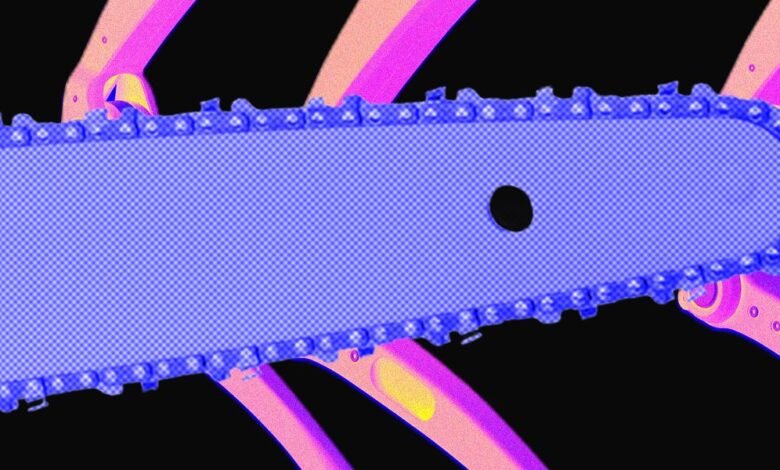Unstoppable AI Robot Survives a Chainsaw Attack

▼ Summary
– Skild AI developed a “Skild Brain” AI algorithm designed as a generalist intelligence capable of controlling any robot for any task using a single model.
– The approach involves training the algorithm on a wide variety of simulated robots and tasks to create a model that can adapt to unfamiliar hardware and extreme physical changes, like losing limbs.
– A key feature is the model’s ability for rapid online adaptation, allowing a robot to adjust its strategy to new situations, such as treacherous terrain or motor failures, by learning from experience.
– In experiments, the algorithm successfully controlled real two- and four-legged robots it had never encountered in training, and even adapted a quadruped to walk on its hind legs.
– Skild AI, which raised $300 million in 2024, is also applying this generalist approach to robot arms and sees it as a significant step toward a more capable, physical superintelligence for robotics.
Witnessing a four-legged robot continue to crawl forward after having its limbs severed by a chainsaw might unsettle many, but for Skild AI CEO Deepak Pathak, it represents a monumental breakthrough in robotic intelligence. This startling demonstration highlights a new form of general-purpose AI capable of adapting to extreme physical damage, a significant step toward creating robots that can handle unpredictable real-world conditions.
Pathak refers to this advanced system as an “omni-bodied brain,” a single algorithm designed to control any robot and perform any task. The core challenge in robotics has long been the scarcity of training data. Traditional methods, like teleoperation or simulation, simply don’t generate enough varied information. Skild’s innovative solution involves training one algorithm across a vast array of different robots and tasks. This process builds a highly adaptable model, known as the Skild Brain, which can generalize its knowledge to unfamiliar hardware and unforeseen situations.
The company’s research, detailed in a model called LocoFormer, showcases this remarkable adaptability. The AI doesn’t just learn a fixed set of movements; it learns how to learn from its immediate environment. When a robot loses a leg or encounters unstable ground, the algorithm quickly recalibrates, applying past experience to its new predicament. This mirrors the “in-context learning” seen in large language models, where an AI breaks down a novel problem and uses its own reasoning to find a solution.
While other organizations, including the Toyota Research Institute and the startup Physical Intelligence, are also pursuing general robot intelligence, Skild stands out for its focus on cross-hardware generalization. In one experiment, an algorithm trained on numerous simulated walking robots was successfully transferred to real two- and four-legged machines it had never encountered. The robots were able to walk immediately. In a more bizarre test, a four-legged robot running the Skild Brain was placed on its hind legs. Sensing the ground beneath it, the algorithm intuitively operated the machine like a humanoid, allowing it to stroll around upright.
The system’s resilience was pushed even further. When a robot’s legs were tied together, cut off, or artificially lengthened, the AI found a way to keep it moving. In another instance, two motors on a hybrid wheeled-and-legged robot were deactivated. The robot adapted by balancing on its two remaining wheels, maneuvering like a wobbly bicycle. This ability to rebuild its understanding of its body on the fly is crucial for handling motor failures, weight changes, or other major disturbances.
Skild is applying the same principle to robotic arms. The Skild Brain, trained on various simulated arms, can control unfamiliar hardware and adapt to environmental shifts like sudden dimming of lights. The startup is already collaborating with industrial partners, and a recent $300 million funding round valued the company at $1.5 billion, signaling strong investor confidence.
Pathak acknowledges that the technology might evoke dystopian imagery for some, but he sees it as the emergence of a physical superintelligence. The capability for a machine to persevere through catastrophic damage isn’t just about robustness; it’s about creating a fundamentally more intelligent and autonomous partner for the physical world.
(Source: Wired)


